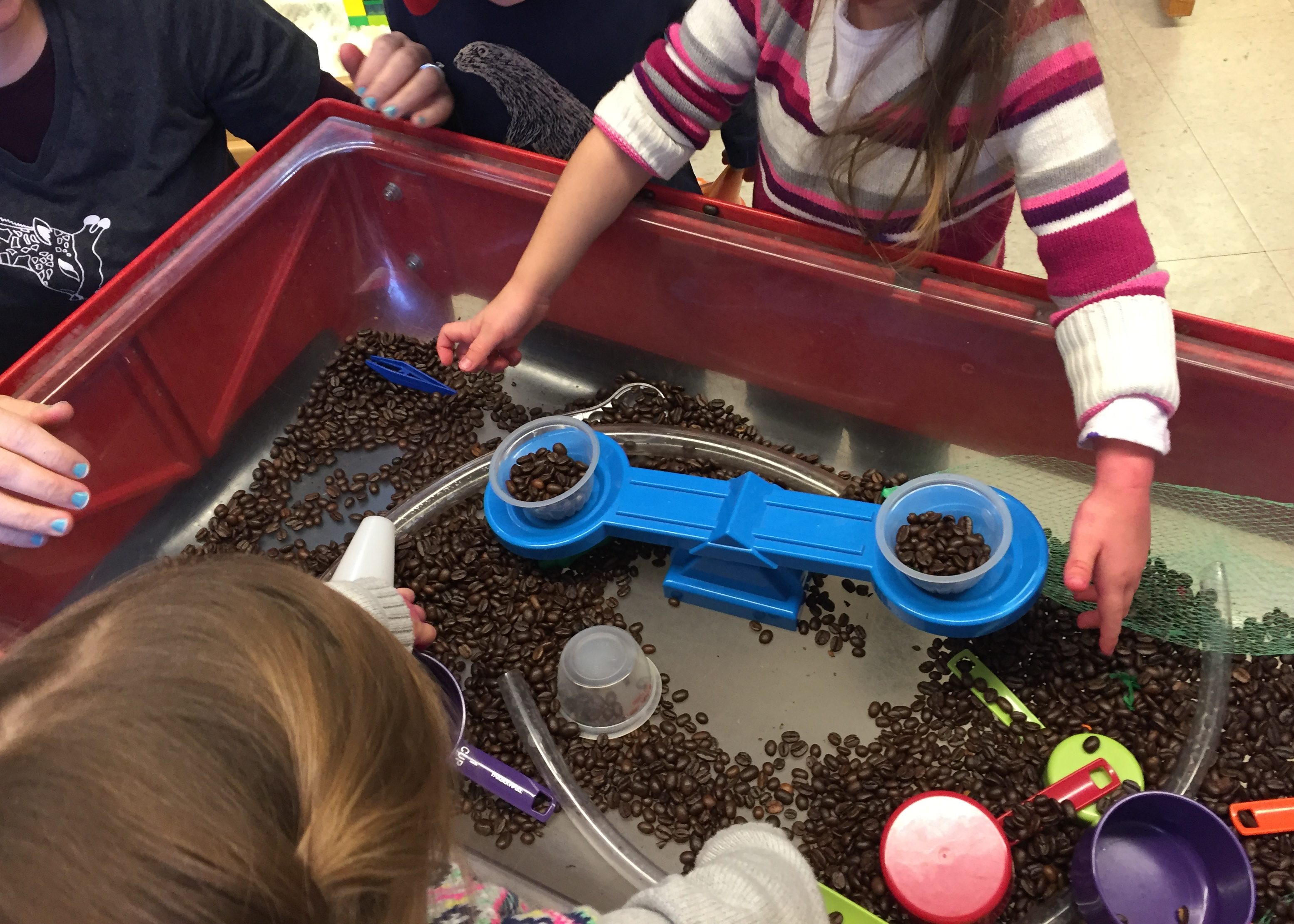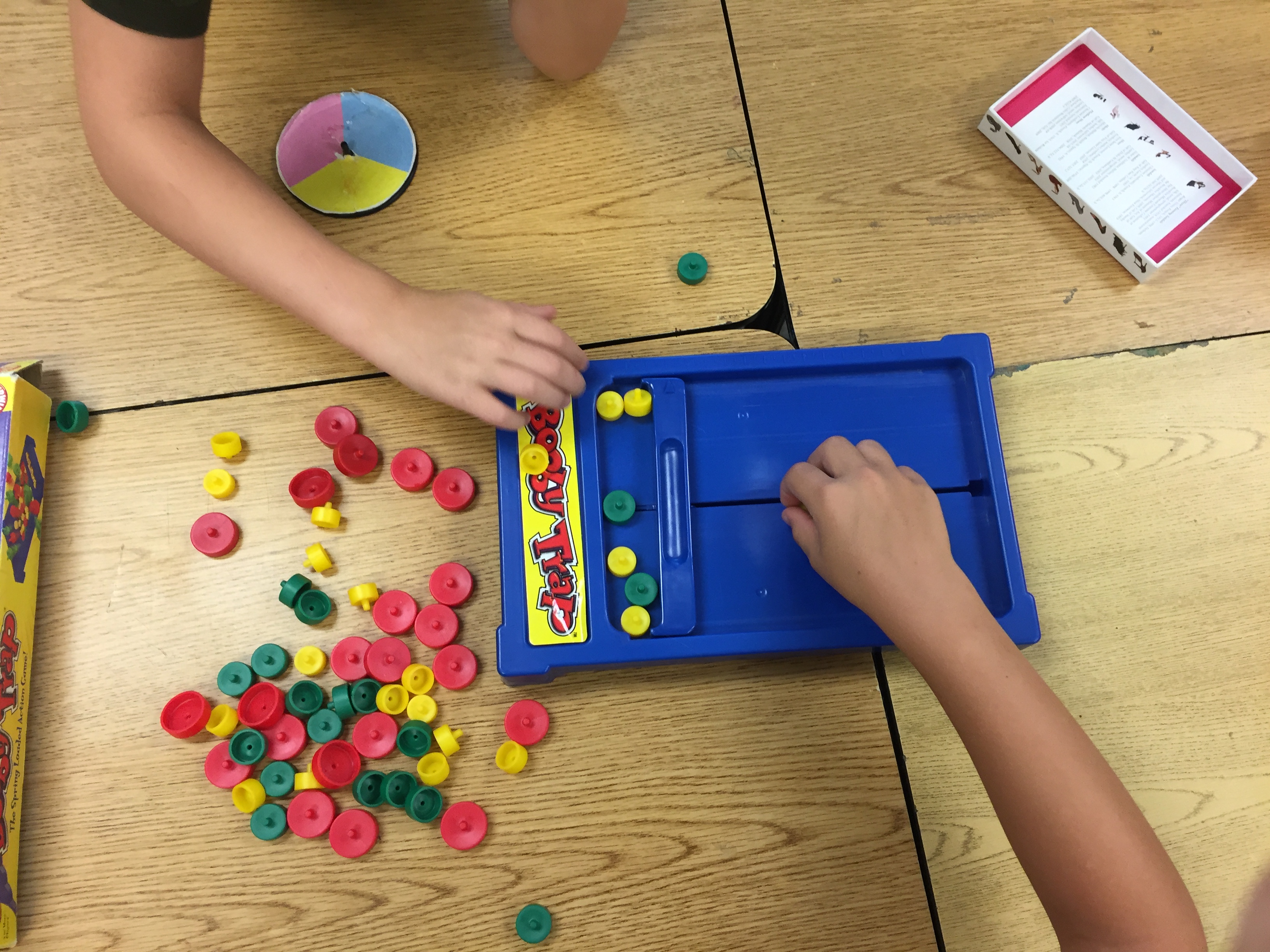The 'M' in STEM
By Peggy Ashbrook
Posted on 2018-05-24
“Mathematics is a tool that is key to understanding science.”
NGSS Lead States. 2013. Next Generation Science Standards: For States, By States. Washington, DC: The National Academies Press.
How many? How soon? How big? How much more? These questions are of vital importance in young children’s lives and may be part of their science explorations and later investigations. “Using mathematics and computational thinking” is one of the practices described in Appendix F—Science and Engineering Practices in the Next Generation Science Standards (NGSS).
- Preschoolers thinking about “How much?”
- Preschooler thinking about “How many more?”
- 1st graders thinking about “How many?”
“Mathematical and computational thinking in K–2 builds on prior experience and progresses to recognizing that mathematics can be used to describe the natural and designed world(s).
- Decide when to use qualitative vs. quantitative data.
- Use counting and numbers to identify and describe patterns in the natural and designed world(s).
- Describe, measure, and/or compare quantitative attributes of different objects and display the data using simple graphs.
- Use quantitative data to compare two alternative solutions to a problem.”
-Appendix F—Science and Engineering Practices in the Next Generation Science Standards
We can use online resources on mathematical and computational thinking in early childhood to become more familiar with, and strengthen our own understanding of, math topics and ideas.
The Erikson Early Math Collaborative describes key topics that exist in early math: Counting, Data Analysis, Measurement, Number Operations, Number Sense, Pattern, Sets, Shapes, and Spatial Relationships.
 The collaborative identifies 26 foundational key mathematical concepts, or “Big Ideas,” within the Early Math Topics such as, “Shapes can be combined and separated (composed and decomposed) to make new shapes,” “Shapes can be defined and classified according to their attributes,” and “Sets can be compared using the attribute of numerosity, and ordered by more than, less than, and equal to.” Detailed explanations and examples shine a light on these ideas and show how they can be addressed in early childhood programs. I would use the first two ideas about shapes when talking with children about their building structures and the third idea when children show me their collections of rocks or are sorting their snack mix.
The collaborative identifies 26 foundational key mathematical concepts, or “Big Ideas,” within the Early Math Topics such as, “Shapes can be combined and separated (composed and decomposed) to make new shapes,” “Shapes can be defined and classified according to their attributes,” and “Sets can be compared using the attribute of numerosity, and ordered by more than, less than, and equal to.” Detailed explanations and examples shine a light on these ideas and show how they can be addressed in early childhood programs. I would use the first two ideas about shapes when talking with children about their building structures and the third idea when children show me their collections of rocks or are sorting their snack mix.
Playing games is one way to provide experiences that build young children’s understanding of mathematical and computational thinking. The Iowa Regents’ Center for Early Developmental Education at the University of Northern Iowa lists games for children ages 3-8, some commercial and some they developed. Nearly every game can be printed out and all have rules rewritten to be kid-friendly. They are linked to standards and include notes for the educator for each game, indicating its value for mathematical learning.
Math resources for early childhood learning communities include articles in the journal Teaching Young Children from the National Association for the Education of Young Children:
McLennan, Deanna Pecaski. Math Learning—and a Touch of Science—in the Outdoor World. Teaching Young Children. April/May 2017 10(4):
Reed, Kristen E., and Jessica Mercer Young. 2018. Play Games, Learn Math! Pattern Block Puzzles. Teaching Young Children. April/May 2018. 11(4): 20-23
Reed, Kristen E., and Jessica Mercer Young. 2018. Play Games, Learn Math! Two Numbers: Games with Cards and Dice. Teaching Young Children. February/March 2018. 11(3): 21-25
Reed, Kristen E., and Jessica Mercer Young. 2018. Play Games, Learn Math! Explore Numbers and Counting with Dot Card and Finger Games. Teaching Young Children. October/November 2017. 11(1).
Reed and Young’s work creating games that teach math concepts is also published online at the Education Development Center, Inc website and includes printable math mini-books for families.
Learn how to play “How Many Are Hiding?,” “Two Numbers,” and “Jumping on the Lily Pads” and then engage your children in playing and learning math concepts.
What resources do you use to foster your children’s use of mathematics and computational thinking?
Disclaimer: The views expressed in this blog post are those of the author(s) and do not necessarily reflect the official position of the National Science Teaching Association (NSTA).






